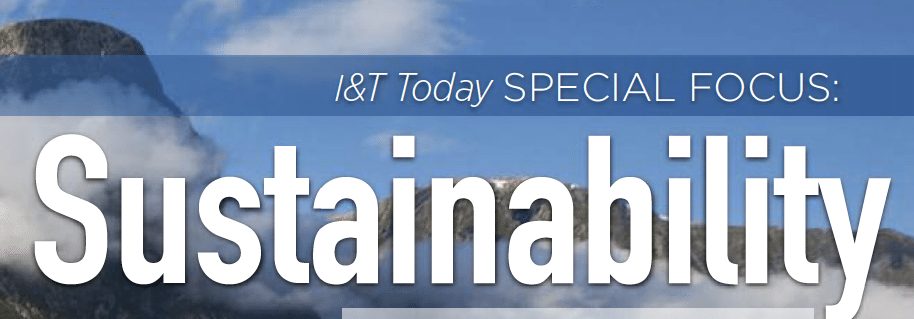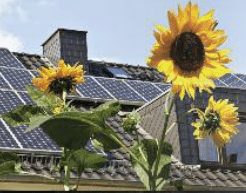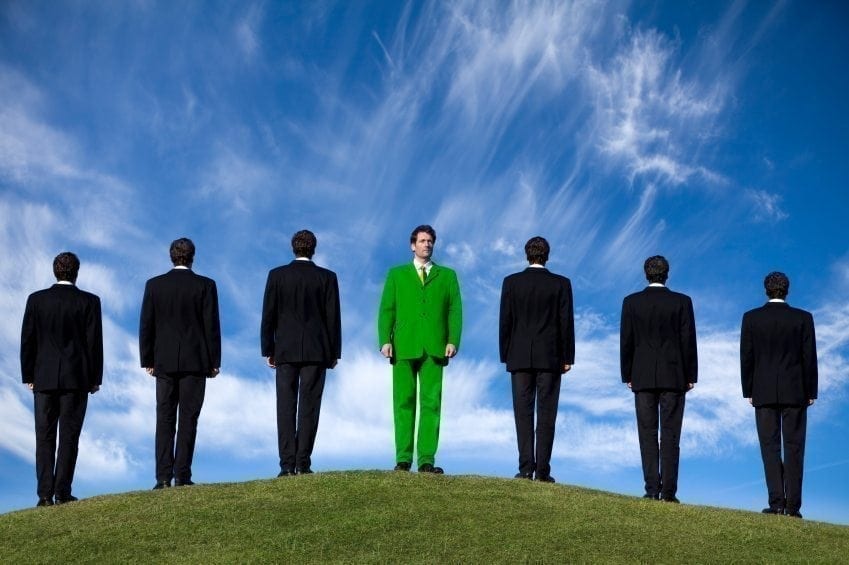 Like the term “business” itself, sustainability means different things to different people – and companies. When the word pops up, it engenders discussion that ranges from developing environmentally sensitive products to figuring out ways to improve the balance sheet in a world with warmer temperatures, fewer resources and greater consumer transparency. As our survey of a few top movers and shakers makes clear (see page 96), sustainability is both creative and diverse.
Like the term “business” itself, sustainability means different things to different people – and companies. When the word pops up, it engenders discussion that ranges from developing environmentally sensitive products to figuring out ways to improve the balance sheet in a world with warmer temperatures, fewer resources and greater consumer transparency. As our survey of a few top movers and shakers makes clear (see page 96), sustainability is both creative and diverse.
It is also urgent and necessary, as seven experts shared in an Innovation & Tech Today roundtable discussion. They include Logitech CSR official Nancy Morrison, Sprint Director of Environmental Initiatives Darren Beck, Lenovo Vice President and Global Diversity Officer Yolanda Conyers, Terepac CEO Ric Asselstine, PwC Managing Director of Sustainable Business Solutions Clinton Moloney, Sprint Director of Corporate Social Responsibility Amy Hargroves, and The Big Pivot and Finding the Gold in Green author Andrew Winston.
I & T Today: What do you feel is driving companies into pursuing sustainability programs? How do CEOs drive sustainability while holding to the company’s vision and mission?
Andrew Winston, The Big Pivot: ‘Are you concerned about high and volatile energy prices?’ More than half are. That’s a big step in the right direction. I think that number should be 100, but at least a majority are concerned. I recently had an executive come up to me and say, ‘The re’s a debate about the earth warming, but this commodity thing … we’re based on some resources, and they’re critical to our business.’ That’s the wedge into business.
re’s a debate about the earth warming, but this commodity thing … we’re based on some resources, and they’re critical to our business.’ That’s the wedge into business.
Clinton Moloney, PwC: There are three things that drive CEOs: (1) The incentive of personal legacy and their place in history; (2) Stakeholder pressure – employees, customers and investors; and (3) Finding a business case for them to address the sustainability issue and climate change. When you look at the business case, it generally falls into three categories: (1) Where am I at risk? Where do I have the greatest potential for risk? (2) Where is there an efficiency opportunity, to drive my costs down while improving my profits? and (3) How can I provide new products and services and differentiate in the marketplace? This is where the smart CEOs look, and there are a lot of opportunities today.
I & T Today: What are your overall sustainability goals, and how do develop and pursue them?
Yolanda Conyers, Lenovo: It’s diverse and very balanced. There’s both a long-term and short-term approach, our protect-and-attack strategy brought to sustainability. The protect side is about protecting our core business. The attack side is the short-term execution. We’re the No. 1 maker of PCs, so we have been gaining better use of our resources, working with less manufacturing material, cutting costs and protecting our bottom line. All of our products released since March 31 of (2013) contain at least 5% Post-Consumer Recycled Plastic Content (PCC), with an annual increase of 10%. That adds up to many millions of pounds of plastic that we didn’t have to manufacture. We have a culture that instructs and informs people on Lenovo’s specific programs and efforts toward sustainability, and how they can execute that strategy from their positions. This goes for everyone in our organization, from executives down to the factory labor workers.
Darren Beck, Sprint: In 2007, we set out a goal to reduce our footprint by 20 percent by 2017. That’s a tough goal to achieve in our industry, because data and traffic is growing exponentially. So setting a 20 percent goal is infinitely difficult. But in 2013, we surpassed that goal.
One of the drivers was our merger with Nextel a few years ago. We now had two networks operating parallel of each other. That’s a heavy load from an efficiency standpoint. We consolidated that into a single network, and upgraded the service to our customers. We took about 70,000 cell towers, looked at the overlap, and brought it down to maybe 40,000. Then we upgraded the equipment, putting on next-generation rectifiers that do the power conversion from AC to DC. We raised our energy efficiencies from the mid-80s (percent) to the mid-90s. It’s kind of like rolling out the old refrigerator and rolling in the new one. Much more efficient.
Nancy Morrison, Logitech: We report each year on our progress toward sustainability. Although we do not publish the details of our sustainability plan, the plan is governed by policies and activities intended to ensure that everything we
do considers our environmental, economic and social impact. The company identifies and maximizes opportunities to balance environmental, economic and social considerations throughout our entire business. We pursue responsible products and processes, work to manage legal, cost and resource considerations and predict and mitigate risks related to our operations and business performance.
I & T Today: What business development and expansion opportunities lie within the need to conserve resources, make materials usage more eco-friendly, and strengthen transparency?
Andrew Winston, The Big Pivot: If you can help people do it through your products, there’s opportunity. That’s the profit side of this. That’s the part of the story you don’t see debate about. There might be denial, but that’s fading.
Ric Asselstine, Terepac: Smart Buildings save money and resources, all the way around. Monitoring solutions, like our TereSensesystem, give building owners an army of tiny sensors that work 24 hours a day, 7 days a week. This army of sensors doesn’t need sleep or to be paid; their only purpose is to listen to the building and to send a notification to maintenance when they’ve “heard” something that needs human attention. This is where money savings occur. A smart building can tell its owners when a roof or wall is letting water in, when a pipe is going to freeze or burst, when a water pipe is leaking, and it warns them by sending a notification to their phone. Smart buildings tell owners when something’s wrong before human senses are able to detect the problem. Smart buildings make it cheaper to fix small problems than to pay for repairing catastrophes. Not only do they save money, but they reduce resources and electricity. With enough smart buildings, we’re going to continue to lower our use of energy and make our lives and future much more sustainable.
Darren Beck, Sprint: The doors have swung open very widely. The financing has become much more creative on how you can bring those solutions through, to the types of solutions available, even down to the reduction in cost of putting solar into the mix. All of plays to the favor of anyone who wants to pursue this. Sprint has been a leader in keeping the tax credits in play for those wind producers who want to be on equal footing with the green energy and brown energy. The options are out there to be pursued.
I & T Today: In what areas have you focused your sustainability efforts?
Nancy Morrison, Logitech: One of the biggest opportunities Logitech has to reduce our impact on the environment is in the area of our product packaging. Each year, we work to reduce the impact of the materials themselves – through better, fewer
materials – as well as reduce the volume of what we ship, because that means lower fuel consumption. Also, products that are more energy efficient. They reduce the amount of batteries that consumers use. We have made significant strides in this area. As an example, our G602 Gaming mouse gets up to 250 hours of battery life.
Darren Beck, Sprint: We’ve done a materialities assessment for our company, the whole digital frontier we’re in, and it comes down to three biggies: (1) limiting the amount of carbon we put out there, reducing the energy it takes to run our network; the network consumes about 87% of the electricity we consume as a company, a real energy hog; (2) looking at the device itself, how we deliver the experience; and (3) finding ways to get those (units) back out of the marketplace.
Amy Hargroves, Sprint: The nice thing about energy efficiency is that you get cost reduction at the same time. Budgets are always tight. With our real estate division, they had already started deploying automation systems, so how do you expand that effort? We changed out all the lights to CFLs at the time; now it’s LEDs. On the retail side, it took two years, but real estate finally got a building automation system approved for all our retail stores. That is a 13 to 18% efficiency (improvement) just in that exercise.
I&T Today: How do organizations take the next step required – from establishing a sustainability program to maturing it long-term?
Clinton Moloney, PwC: We spend a lot of our conversation with clients helping them be successful in the short-term while creating a long-term strategy. I think most CEOs are frustrated with the overwhelming focus on the short-term, because they feel hampered in making the long-term decisions that are in their interests. That’s why we’re working so hard to offer up the metrics and measures, that enable them to make these long-term decisions with things like social change, climate change and fewer resources in mind. We need to look more at the long-term, at least as much as we attend to the short-term. The decisions and frameworks we’ve relied on for decades to get to where we are today are not up to the task moving forward.
Darren Beck, Sprint: Some of the inroads we’ve made around the phone include bringing the first eco-friendly phone to the market, called Samsung Reclaim at the time. As we developed it, we looked for benchmarks for green phones; there were no standards to be found. We found some Greenpeace guidelines and other sources, but we documented what we learned. Through that, we developed Sprint’s Eco Criteria, which we still use today. We worked with Underwriters Lab (UL) to develop the standard for green-friendly phones, brought the other carriers to the table, and now we have UL-110, the world’s first mobile green phone standard. This year, for the first time, the Green Electronics Council started putting phones that met this standard into the registry.
We feel it’s incumbent on every company to either develop their own standards or benchmarks, or to have that third party weighing in to verify what everyone in their production chain is doing to take out harmful materials, reduce energy or recycle. It’s a way to establish our program is working down the chain rather than relying on the self-assurance of the (sourcing and manufacturing) companies themselves.
I & T Today: If you could look into a crystal ball ten years, what would you see as a landscape for business, use of resources and social responsibility?
Nancy Morrison, Logitech: It is difficult to generalize about what the most important factors are for businesses to thrive in the next ten years. For Logitech, factors such as weather, resources, energy costs and social impact are important, and we work to manage those – but the most important factors for us are innovation and design based on consumer insights and technology advancements. Our business is based on understanding what consumers want, and applying innovation and design to create products that consumers love to use.
Andrew Winston, The Big Pivot: The time for small changes is probably over. We need a fundamental shift for the next ten years and beyond, as I’ve described in my book. We need to be operating in a way that solves those problems, and work our way back from there. How do we do that profitably? How do we use capitalism? This isn’t walking away from capitalism, but challenging some of its precepts. If we can do this, companies will discover opportunities, they will create new products, and those products will prove valuable to consumers in the world ahead. There will be profit, and that’s a win-win for everyone.
Clinton Moloney, PwC: There are many companies that have asked us, ‘What is the business model transformation that will be required in order to address these issues?’ While scientists and others have talked about this for a long time, it has now gone mainstream with business. Still, it will take a couple of years from when people acknowledge that they are facing a different situation to adjust and navigate through it. So the work right now is just connecting with some of the transformational models that will be required.
I & T Today: What collaborations are helping drive and expand your company’s sustainability efforts?
Nancy Morrison, Logitech: One of our most important collaborations is with the other members of the Electronics Industry Citizenship Coalition (EICC). The EICC actively promotes an industry-recognized Social and Environmental Code of Conduct, and Logitech’s operational practices reflect and demonstrate our commitment to this code.
Darren Beck, Sprint: We’re moving to more renewable energy in our portfolio as a whole. We’re leading the way with the Department of Energy to put hydrogen fuel cells onto the network for backup power, in case of emergency if the grid goes down. Through a $7 million grant the DOE awarded us awhile ago, we’ve been able to deploy about 500 of these fuel cells onto the network. We’ve recently begun to work with them on a new grant, to develop lightweight fuel cells that can actually go onto rooftops. They can be refueled from the ground. We found the rest of our industry could adopt this new technology as well; if it’s working well for us, we can extrapolate it out to them. Partnership with someone like the DOE to develop and bring in new and renewable energy sources is very helpful.










